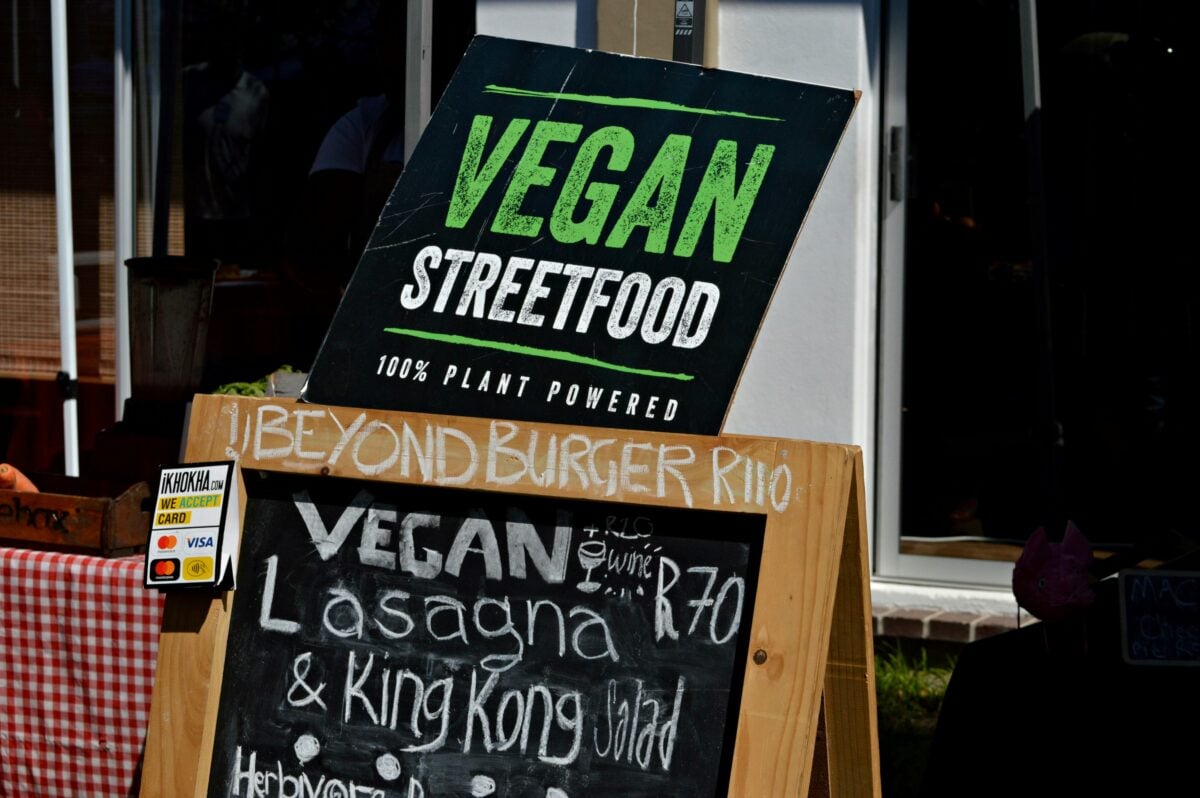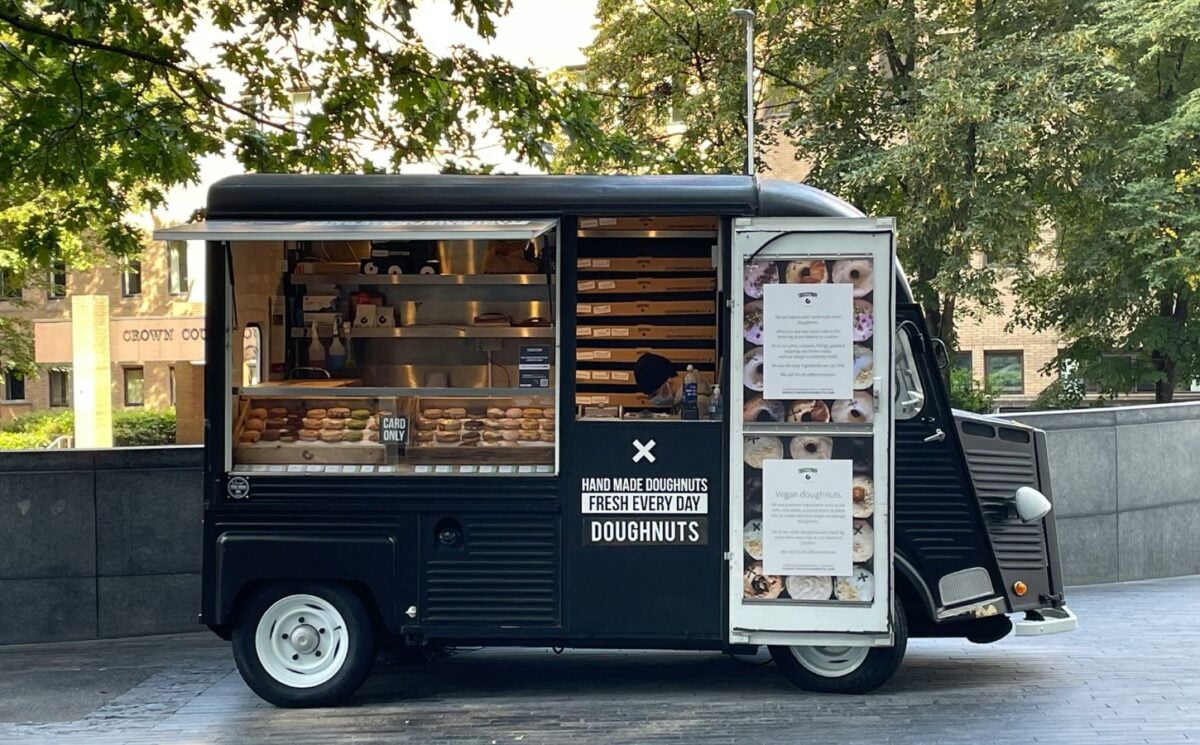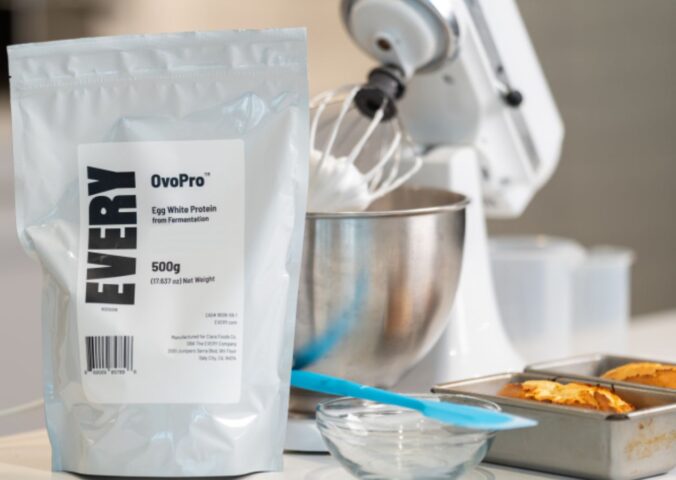This is paid-for content*
There’s been a lot of news recently about vegan restaurants switching gears to serve meat, but we’re here to tell you that the plant-based market is far from done. In fact, the vegan food industry is predicted to triple in value over the next 10 years, making it more lucrative than ever. So, if you’re thinking about launching a vegan food truck, there’s never been a better time to start.
But how do you get your business idea off the ground? From taking payments to choosing locations, learn how to launch a thriving vegan food truck with these tips.
1. Choose a crowd-pleasing concept

With the rise in plant-based food, being a vegan business isn’t necessarily a unique selling point (USP) anymore. You might need to dig a little deeper to create a stand-out concept that resonates with your audience.
The key here is to consider both your food and your target market. For instance, if you’re serving vegan junk food, you might have an audience of 18-30-year-olds. Your USP could lean into late-night opening times and social-media-worthy food to capture the attention of your potential customers. Let’s take a look at some other unique vegan food truck ideas to get your creative juices flowing:
- A vegan ‘American Diner’ fast-food truck: Perfect for on-the-go meals at music festivals and sports events, with the all-American feel helping differentiate you from other fast-food options. Offer unique menu items, like loaded fries and ice cream floats, to establish your USP.
- Plant-based Greek gyros and baklava: Appeal to a foodie audience looking to explore new flavours. Give customers the option to personalise their gyro fillings to ensure you appeal to adventurous palettes.
- Healthy bowls and superfood smoothies: Market yourself as a ‘hangover help’ at music festivals, or slot right into yoga and meditation events. Offer wellness information for each of your meals via QR codes and embrace a more holistic approach to health.
2. Market research and business plans
Once you’ve thought of an idea for your vegan food truck, test it with your target audience. Ask for feedback on the concept, with questions like:
- What do you like and dislike about the idea?
- How would you make it better?
- What would draw you to a competitor instead of us?
Use their answers to refine your business model and ensure it’s perfect for your potential customers. Then, it’s time to get started on your business plan.
This is a document that’ll establish your idea in writing and contain information like your market research, financial projections, and growth plans. If you’re seeking investments or funding, a thorough business plan is a must. It’s also useful to have when onboarding a partner or new hires, ensuring everyone’s focused on the same goals.
Not sure how to write a business plan? There are tons of templates and examples online that you can use to guide your next steps.
3. Equipment and branding

You’ll need to invest in the right tools to get your business up and running. This includes your kitchen equipment, like:
- A fridge and freezer
- A stove, oven, and microwave
- Utensils, frying pans, and pots
- Food storage
- Serving equipment (like plates, takeaway boxes, and cutlery)
- Cleaning equipment
When serving your customers, make sure you have different payment options available. Choose a card machine that accepts Chip and PIN payments alongside contactless card payments and digital wallets. Once you’ve taken an order, a restaurant buzzer is handy to let your customers know their food is ready.
In terms of branding, your food truck should clearly reflect your unique brand identity. Add your logo and brand colours to the truck, along with visuals that align with your aesthetic. Your look should appeal to your target market while helping you stand out from competitors, so spend time getting it just right.
Don’t forget staff uniforms, too! A simple branded t-shirt or apron helps curate a more professional image while boosting brand awareness.
4. Start exploring locations
As a vegan food truck owner, you can bring your business directly to your target customers. Whether sticking to a circuit or trying new events, explore different locations for your truck. Popular choices for food truck businesses include:
- Music festivals and wellness retreats: Large outdoor events have a lot of foot traffic, with hungry customers looking for tasty food they can eat on the move. In particular, be sure to secure spots at festivals and retreats with a large vegan following.
- Vegan food fairs: Where better to find your target audience than at a vegan food fair? There are tons of these happening around the country, from Brighton to Liverpool, and they’re often looking for exciting new businesses to join their line-up.
- Campuses and offices: Office workers and students are always on the lookout for convenient, affordable meals. Setting up near campuses or business hubs can give you a steady lunch crowd.
- Fitness and wellness spaces: The fitness crowd is getting behind plant-based diets. Park up outside gyms and yoga studios to connect with health-conscious customers.
- Late-night hot spots: If your menu is focused on vegan junk food, parking near pubs and clubs can attract the hungry nighttime crowd.
When you’ve found a few events or areas you’re interested in, get in touch with the right people (this could be event owners, local councils, or other business owners). Send them a brief pitch of your concept and links to any relevant websites or social media profiles, giving them a taste of what you’re offering.
5. Registration, permits, and insurance
There’s a lot of paperwork involved in starting a food truck business. You’ll first need to register your business with HM Revenue and Customs (HMRC), which is a legal obligation and essential for paying tax.
Your business is going to need liability insurance, too, which protects you against legal claims if anything goes wrong. You’ll also need to register and insure your food truck before you can hit the road.
As a food business, every member of your team who handles food will need basic food safety training. Apply for a food safety hygiene rating to ensure you’re compliant with health regulations and build trust with customers. Most councils require street trading licenses, too, so be sure to get in touch with your local authority to check regulations.
Final Thoughts
The world needs more vegan food trucks. Whether you’re dreaming of dumplings and dim sum or have a passion for pizza, we hope these tips have helped you get started on your road to opening your own plant-based food business. To learn more about SumUp and how it can help simplify your vegan food truck – or any other business – visit sumup.com.
*This content is produced in collaboration with SumUp. Our commercial partnerships with organizations like this help us to provide our free services to millions of people each week.






